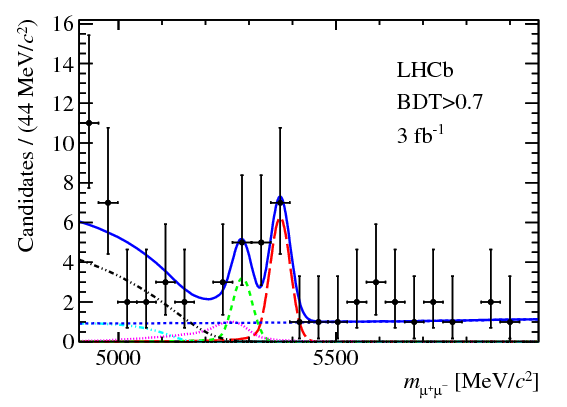B meson decay confirmed!
Posted by David Zaslavsky on
Time for a blog post that has been far too long coming! Remember the Quest for B Meson Decay? I wrote about this several months ago: the LHCb experiment had seen one of the rarest interactions in particle physics, the decay of the \(\mathrm{B}^0_s\) meson into a muon and antimuon, for the first time after 25 years of searching.
Lots of physicists were interested in this particular decay because it’s unusually good at distinguishing between different theories. The standard model (which incorporates only known particles) predicts that a muon and antimuon should be produced in about 3.56 out of every billion \(\mathrm{B}^0_s\) decays — a number known as the branching ratio. But many other theories that involve additional, currently unknown particles, predict drastically different values. A precise measurement of the branching ratio thus has the ability to either rule out lots of theoretical predictions, or provide the first confirmation on Earth of the existence of unknown particles!
Naturally, most physicists were hoping for the latter possibility — having an unknown particle to look for makes things exciting. But so far, the outlook doesn’t look good. Last November, LHCb announced their measurement of the branching ratio …